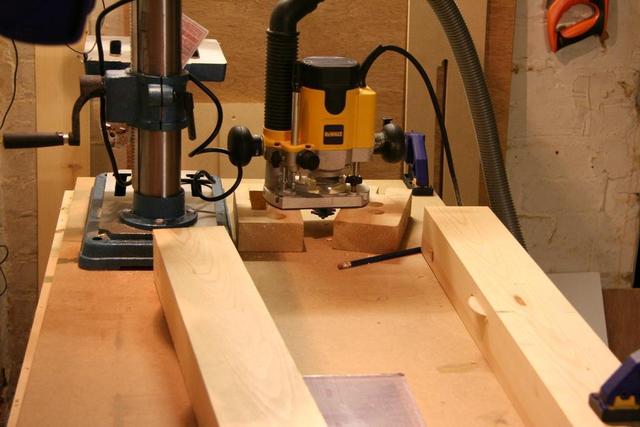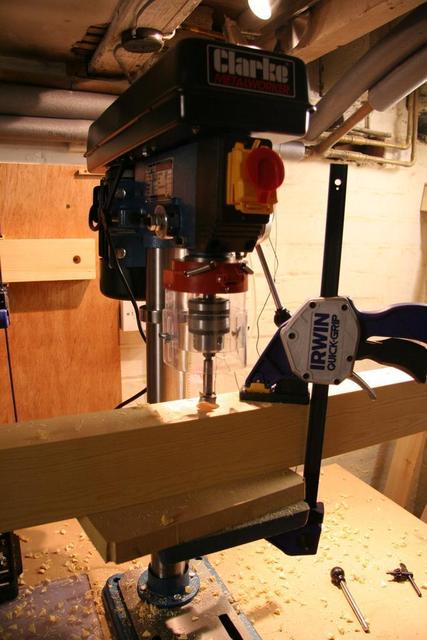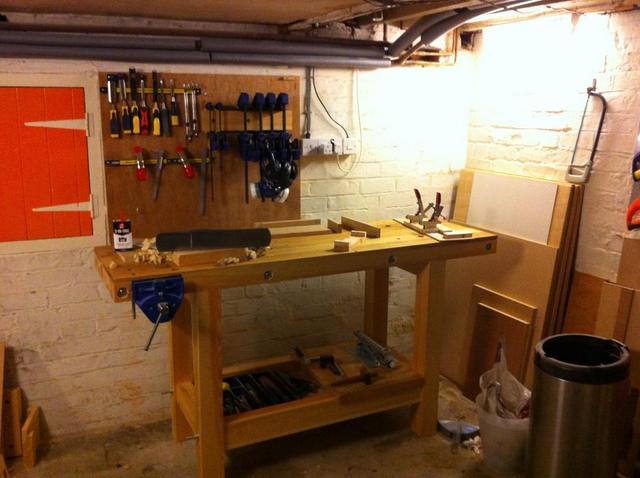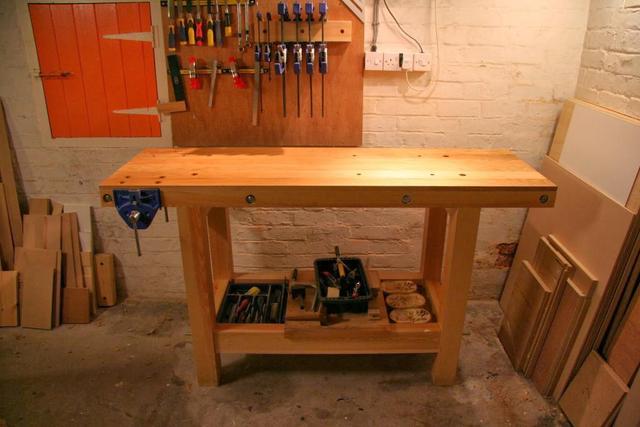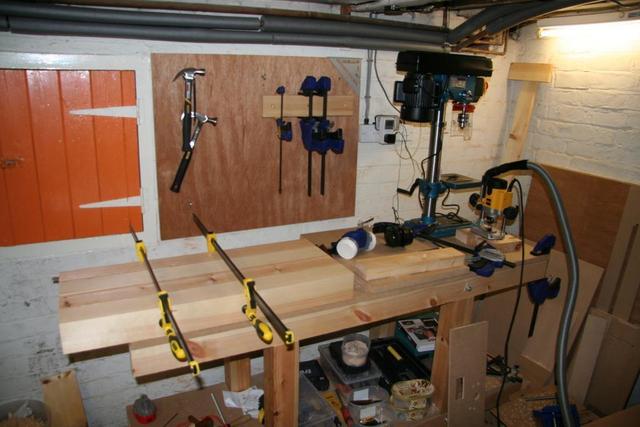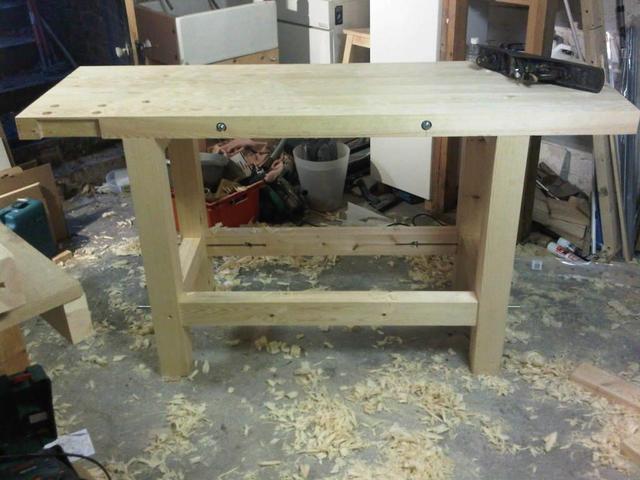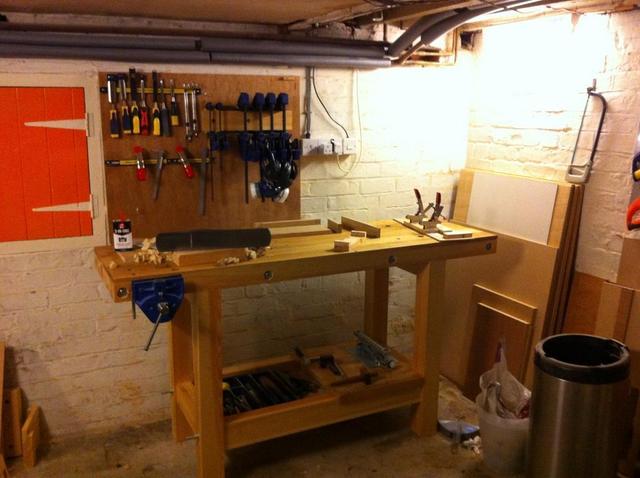Workbench
06 Jan 2013A good workbench really helps get all your other projects off to a good start. However, you can go over the top spend years making a workbench rather than anything with it. I’ve now made two workbenches - the first now acts as a router table, the second took a lot longer to make and is probably overkill.
Workbench the first - Knockdown, MDF-top
This bench was made with very few tools soon after moving into the workshop. I wanted it to be able to disassemble it so didn’t want to use any glue or screws. Instead it uses threaded rod and bolts. The top is a 25m piece of MDF, which seemed to be recommended on the Internet becuase it is easy to replace and very flat. However, it is nasty stuff to work with and I would probably use marine-grade birch ply if making again.
I ended up changing the design once it became clear that the legs were too close together and when you leant on the wings the whole bench tipped up. I didn’t want the legs at the corners as the general view is that they get in the way when working.
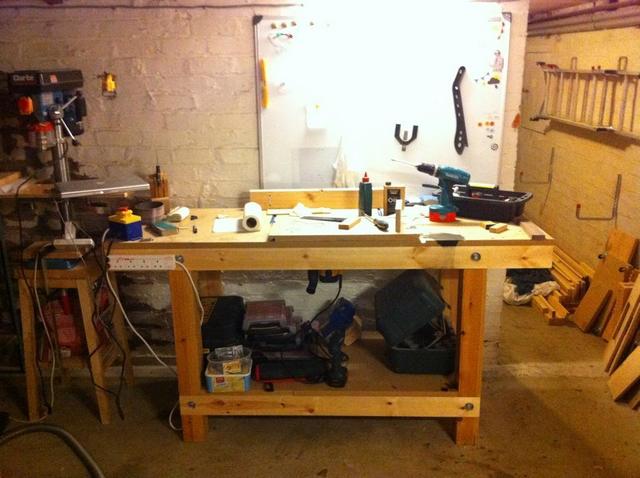
Workbench the second
</a> Whilst the first bench was very functional, it didn’t have the pizzazz / romance / joinery / stirdiness that I was hoping for. Books like Christopher Schwarz’s Workbenches are filled with inspiring examples of master craftsmanship. However, I was mindful not to set out on a 3 year project - so tried to design a simple but solid upgrade to the first bench. This time with proper joinery and a solid top (rather than nasty MDF). The first problem came with trying to find Chris’ timber of choice; Southern Yellow Pine - not easy to get in the UK and certainly not a cheap option. Instead I tried pricing it up in beech and oak and rapidly came to the conclusion that the whole project was doomed
- hardwood timber is just far too expensive here. Rather than abandon I went ahead with ‘redwood pine’ - the standard joinery grade softwood from the local yards. It later turned out that this too was a mistake because it is just too soft for one of the key design features I wanted: dog holes. By this stage it was already built so I added a top layer of 22mm oak. The finished bench works well and looks pretty good but it did take a long time to build and isn’t significantly more effective than the first bench; although it is much heavier.
